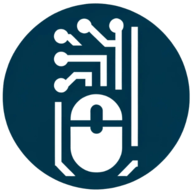7 Tips for Presenting Technical Work to a Technical Audience
Presenting technical work to a technical audience can be challenging, but mastering this skill is crucial for success. This article offers expert insights on effectively engaging your peers with real-world examples, balancing depth with accessibility, and more. Discover proven strategies to captivate and inform your technical audience.
- Use Real-World Examples
- Balance Depth And Accessibility
- Frame As Problem-Solving
- Bridge Surgical And Rehab
- Use Real-Time Analytics
- Know Your Audience
- Tailor To Technical Backgrounds
Use Real-World Examples
I once presented a security training session for a law firm that had recently experienced a phishing attempt. Their team needed a clear breakdown of how the attack happened and how to prevent future threats. Instead of relying on technical jargon, I used real-world examples and a step-by-step walkthrough of the phishing email they received. I highlighted key red flags and demonstrated how even a well-crafted scam could be spotted with the right awareness.
To keep the presentation engaging, I included an interactive element--live phishing email simulations. I asked the team to analyze a few sample emails and identify potential risks. This hands-on approach made the information stick. I also shared simple security measures, like enabling multi-factor authentication and verifying unexpected requests, which they could apply immediately. The firm later told me their team felt more confident handling suspicious emails, and their phishing report rate improved.
When presenting technical topics, the key is clarity and engagement. Break down complex ideas into digestible parts, and use examples that resonate with your audience. If possible, make the experience interactive. People learn best when they're involved. A well-structured, practical session not only informs but also ensures the lessons are remembered and applied when it matters most.

Balance Depth And Accessibility
Presenting technical ideas requires balancing depth and accessibility. A key experience was presenting my work on probabilistic deduplication estimators at a Tech-talk session to a diverse technical audience, including engineers, technical product and program managers, and architects.
Even technical audiences have varied expertise, so I tailor my approach to create an intuitive bridge between familiar and new concepts. Instead of diving into technical jargon, I start with a relatable problem: how large-scale storage systems estimate redundant data without storing metadata about scanned blocks. Establishing this motivation keeps the audience engaged.
* Taking the Audience on a Journey *
A strong narrative makes complex topics more accessible. In a previous project, I worked on a deduplication system requiring periodic full scans, which proved inefficient. This led me to explore probabilistic deduplication estimators, introduced as a logical next step. Framing it as a progression keeps the audience engaged.
* Visual Aids *
Visual aids like diagrams and animations simplify abstract concepts. For example, illustrating how HyperLogLog-based estimators map hash values into registers helps convey efficiency gains. By using intuitive visuals instead of overwhelming technical jargon, I ensure accessibility.
* Well-structured *
A well-structured talk prevents cognitive overload. I break it into:
Problem Introduction - Need for efficient deduplication estimation.
Existing Solutions - Identifying pain points.
Proposed Approach - Probabilistic estimators.
Performance Insights - Key results.
Future Prospects - Real-world applicability.
Encouraging Engagement and Discussion
Genuine interaction strengthens a presentation. Instead of positioning myself as an all-knowing expert, I share challenges and foster discussions through open-ended questions. When faced with complex queries, I acknowledge uncertainties and explore solutions collaboratively.
* Q&A & Feedback *
Engaging with audience questions deepens understanding. I ensure all perspectives are valued and provide simplified explanations when needed. A strong close reinforces key takeaways and encourages further discussion.
* TLDR *
An effective technical presentation balances depth with clarity, using relatable narratives, structured content, and visual storytelling. Encouraging interaction and engagement transforms it into an insightful and memorable experience, sparking curiosity and meaningful discussions.

Frame As Problem-Solving
During my time as a social media manager for a sustainability startup, I was tasked with presenting our social media strategy to a team of data scientists and engineers. Since they were focused on metrics and system integrations, I knew a flashy, standard marketing presentation wouldn’t be effective.
To make the discussion more engaging, I framed it around a real challenge we faced: Our engagement rates on social media were dropping despite increasing our content output. I walked the audience through our investigative process. How we used data analytics to track audience behavior, identified algorithmic changes that affected reach, and leveraged API integrations to optimize content performance.
For example, I demonstrated how integrating our CRM (Customer Relationship Management) system with social media analytics allowed us to track customer interactions more effectively, leading to a 20% increase in engagement.
By presenting this as a problem-solving journey rather than just numbers on a slide, I kept the team engaged and made the technical aspects of social media feel more relevant to their expertise.
This approach sparked meaningful discussions and led to new collaboration ideas between the marketing and data teams, ultimately improving our strategy’s impact.
Here’s what I do in my approach when presenting to a technical audience:
Try to Understand Your Audience
Technical audiences value logic, accuracy, and efficiency in presentations. They love a problem-solving approach. For this, you can try the What (describe the problem), So What (why is it important to solve?), Now What (how do we solve it?) framework.
Use Data and Evidence
Support your points with relevant statistics, research, or real-world case studies. Visualize complex data with charts, graphs, or infographics to enhance clarity.
Be Clear and Concise
Keep your presentation structured with a clear introduction, main points, and conclusion.
Sprinkle Some Storytelling
Use real-world scenarios or case studies to make technical details more relatable. Stories are 22x more memorable than facts alone (Standford Innovation Lab: https://womensleadership.stanford.edu/node/796/harnessing-power-stories).
Prepare for Technical Questions
Anticipate potential challenges or counterpoints and be ready to explain them. If you don’t know an answer, acknowledge it and offer to follow up later.

Bridge Surgical And Rehab
One memorable experience was when I presented to a group of orthopedic surgeons and sports medicine specialists about the role of physical therapy in post-surgical rehabilitation. With over 30 years in the field and a deep understanding of musculoskeletal injuries, I wanted to bridge the gap between surgical intervention and effective rehabilitation strategies. I structured my presentation around real patient case studies, demonstrating how a tailored physical therapy approach can accelerate recovery and improve long-term outcomes. By drawing on my experience treating elite athletes and my work with postural syndromes in desk-bound professionals, I was able to showcase the importance of personalized rehab plans. I ensured the presentation was data-driven yet practical, incorporating the latest research alongside hands-on demonstrations of rehabilitation techniques.
To keep the audience engaged, I encouraged an interactive discussion, allowing the surgeons to ask questions and relate the concepts to their own patients. My background in directing clinics and managing multidisciplinary teams helped me articulate how collaboration between physical therapists, surgeons, and allied health professionals leads to better patient care. One of the key moments was when I shared the case of a national-level rugby player who underwent ACL reconstruction. Through a structured rehab program that blended physical therapy, strength training, and Pilates, he not only returned to the field within the expected timeframe but also enhanced his performance and reduced re-injury risk. The presentation sparked valuable discussions on integrating physical therapy into post-surgical protocols, and several specialists later referred patients to our clinic, reinforcing the impact of an integrated, evidence-based approach to recovery.

Use Real-Time Analytics
Presenting my work or ideas to a technical audience is something that I have done multiple times in my career, particularly in my role at Walmart and during various projects involving Workday systems. One memorable instance was when I led a session on Workday Integrations at a company-wide technical summit. My audience was comprised of fellow engineers, system analysts, and IT leaders, eager to understand how we were leveraging Workday Integrations to streamline processes for Walmart's workforce.
Understanding the need for an engaging and informative presentation, I adopted a structured approach. First, I ensured that I was well-prepared with facts, figures, and anticipated questions. This involved gathering data on the project impacts, including improvements in process efficiency and benefits to the organization. I used real-time analytics and success metrics to demonstrate the value added by our Workday integration solutions.
To keep the presentation engaging, I structured my delivery around real-world scenarios and stories, drawing from my extensive experience in solutions design and architecture. I crafted a narrative that connected with the audience, focusing on problem-solving strategies and the innovations our team introduced. Additionally, I incorporated visual aids, such as flowcharts and system diagrams, to illustrate complex integrations and workflows. This helped demystify technical concepts for some of the non-technical attendees while keeping it detailed enough for the more technical audience members.
To make the session interactive, I encouraged questions throughout, rather than waiting until the end. This allowed for a dynamic dialogue and enabled me to address immediate concerns, adding depth to the discussion. Moreover, I ended the presentation with a call-to-action, inviting feedback and suggestions for further improvements. This openness not only fostered a collaborative spirit but also demonstrated our commitment to continuous improvement.
Overall, the presentation was well-received, with many applauding the clarity and depth of the insights shared. The feedback from this session was invaluable and informed future presentations, ensuring they were tailored to audience needs and expectations. This experience underscored the importance of marrying technical expertise with effective communication to engage technical audiences successfully.

Know Your Audience
Yes, I once had to present a data-driven marketing strategy to a technical audience of developers and data analysts. The challenge was to ensure that the insights were both engaging and informative, while also aligning with their technical perspective.
Approach I Took:
Know Your Audience:
I started by understanding their background--since they were highly analytical, I focused on data-backed insights rather than just marketing theories.
Use a Structured Narrative:
I framed the presentation as a problem-solution journey, beginning with real-world challenges in conversion rate optimization, followed by a data-driven approach to solve them.
Incorporate Visuals & Data:
Instead of long paragraphs, I used charts, graphs, and flow diagrams to illustrate trends and results. This made complex data more digestible.
Connect Marketing to Their World:
I highlighted how automation, AI tools, and data analytics played a key role in our strategy, ensuring relevance to their technical expertise.
Encourage Interactive Discussion:
Rather than a one-way presentation, I built in Q&A points throughout the session to encourage engagement and technical input.
Outcome:
The presentation was well received, as the audience appreciated the data-driven storytelling. By aligning the content with their analytical mindset, I was able to keep them engaged while delivering key takeaways effectively.

Tailor To Technical Backgrounds
As Director of Marketing in an affiliate network, I often present complex strategies to technical audiences, such as data analysts and IT teams. I once introduced a new data analytics tool aimed at improving affiliate performance tracking. To engage a mixed audience, I researched their technical backgrounds and tailored my presentation to address their specific interests and concerns, ensuring both technical integration and marketing benefits were clearly communicated.


